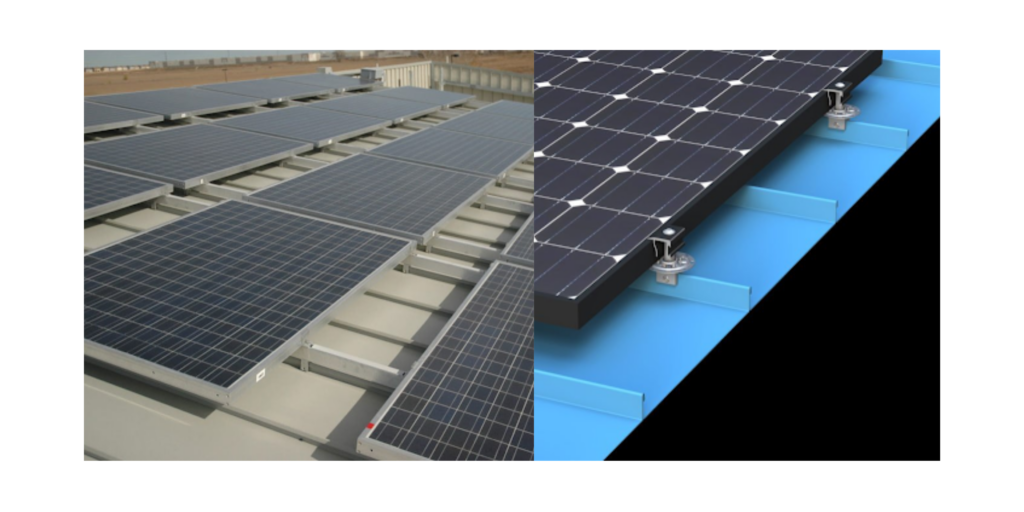Solar panels can be a worthwhile investment; they pay for themselves, save you on electric bills, and reduce carbon emissions. But how are solar panels attached to your roof?
In short, the installation of solar panels depends entirely on what covers your roof. In this article, we will unravel the installation process and the products we use to make your rooftop an eco-friendly power station, ultimately saving you on energy costs for years to come.
The mounting process all rests on the mounting systems- which are paramount for situating solar arrays- because they are responsible for securing the system to the roof (firmly assembled to sustain all types of weather conditions).
The solar industry offers a plethora of mounting systems for installing solar panels to any roof.
Things to Keep in Mind When Solar Panels Are Attached
- Mounting systems are constantly being upgraded and renovated to be faster and more efficient to install, while maintaining the same high level of quality and longevity.
- Leaks are a widely recognized concern and have long been resolved with the vast majority of systems. Particularly if they are installed correctly and your roof isn’t already too old when your solar system is installed.
Racking
Racking is the framework of your solar panels, safely fixing the photovoltaic panels of your system onto various roofs and other surfaces, as well as the ground. The standard residential solar system is secured by using attachments spaced along the rails. Parallel to the peak and gutter, rails almost always run horizontally along the roof (there are occasional exceptions that will have the rails run vertically).
Shingle Roof
Mounting attachments used for shingle roofs commonly consist of lag screws that are installed directly into the rafters of the home. The SnapNrack Ultra Rail Roof Mount is a versatile mounting system that works with most any roof structure. This mounting system needs no shingle cutting, and features patented Umbrella Seal technology for a waterproof attachment. Ultra Rail Mounts use snap-in brackets to attach the rail, eliminating the need for adjusting shingles.
Standing Seam Metal Roof (S-5!)
Standing seam metal roofs are notably compatible with solar applications and other projects, as the roofing infrastructure contains interlocking seams that can be used to conveniently mount solar modules without any holes or drills.
The S-5! Ulta Rail Roof Mount system takes an innovative and modern approach to the traditional installation methods. By incorporating setscrews, clamps, and S-5 EdgeGrabs, the solar arrays are securely fastened to the roof. Amid maintaining a high quality, aesthetically pleasing look, the system and running wires are invisible underneath the arrays.
The Process of How Solar Panels Are Attached
- Your installation team will begin by conducting measurements of the roof, marking the locations of the desired placements with lumber crayon.
- Once the arrays are verified as the plan indicates, we mark the distance of the edge of the panels that the rail needs to run along the roof. On each row of modules, we will also have a set of rails run horizontally.
- Every rafter within the array boundary is located and snap chalk lines are made (vertically fo
 r each rafter and horizontally for the rail). At this point the team will have set a center point for each attachment.
r each rafter and horizontally for the rail). At this point the team will have set a center point for each attachment. - Each marked space is pre-drilled by the chalk line. (For a standing metal roof, the S-5! clamp is attached)
- The attachment is then sealed with roofing sealant and screwed into the rafter until the lock washer compresses. (Lock washers are designed to keep them from vibrating loose).
- L-brackets are installed, leveled and tightened, and on them we install the rails that the modules will mount onto.
- We then pre-wire the roof and install micro inverters that the panels will plug into.
- Lastly, panels are installed onto the rack and supports, with clips on each row.
Conclusion
Installing solar panels to your roof is complex and has spawned multiple installation solutions. The state of the art is continually evolving to do a better job and be easier to install. Once your professional consultant finalizes a plan that meets your needs, your project is reviewed by a structural engineer to ensure a safe and effective installation. An installation that will not only make your home more eco friendly, but create a system that will last as long as the solar panels.
If you liked this article, you may also like:
Did 2022 Finally Make Solar Panels Beautiful?
How Does The Solar Tax Credit Work?




